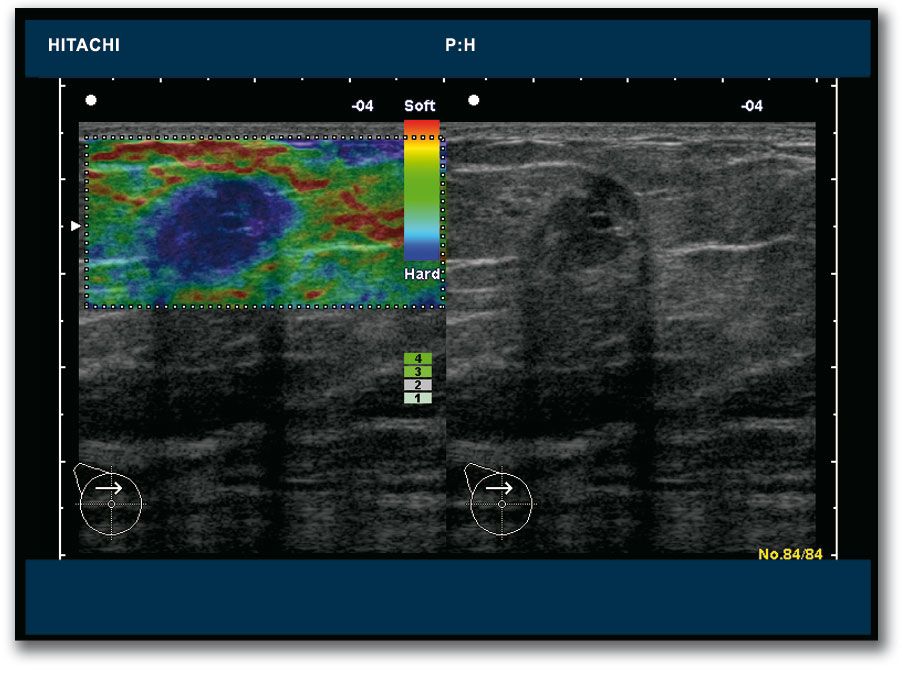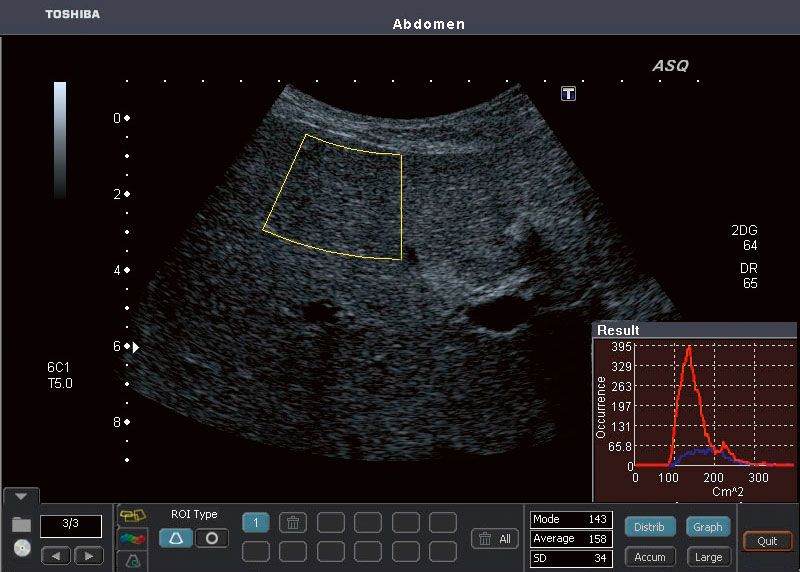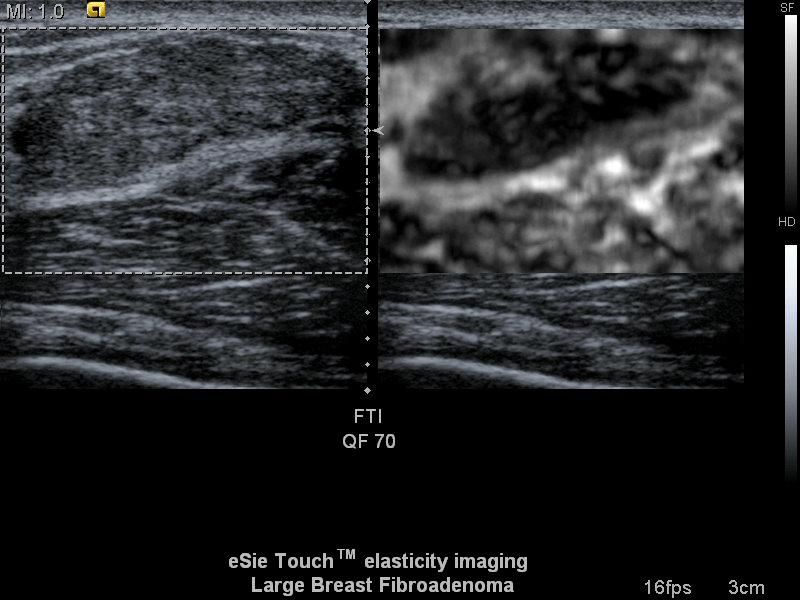- AI
- Molecular Imaging
- CT
- X-Ray
- Ultrasound
- MRI
- Facility Management
- Mammography
Elastography advances feature prominently among ultrasound exhibits
The exhibition booths occupied by vendors of ultrasound systems at ECR 2010 are likely to be very busy places throughout the congress. Difficult economic conditions are causing a dip in global demand for the more capital-intensive modalities like CT and MRI, and hospital managers are keen for their staff to explore the clinical potential of this versatile and cost-effective technology.
The exhibition booths occupied by vendors of ultrasound systems at ECR 2010 are likely to be very busy places throughout the congress. Difficult economic conditions are causing a dip in global demand for the more capital-intensive modalities like CT and MRI, and hospital managers are keen for their staff to explore the clinical potential of this versatile and cost-effective technology.
Delegates are eager to hear more about the latest hardware and software applications being unveiled by this sector’s major names, and the biggest buzz emanating from ultrasound exhibits is around elastography. The technique uses mechanical compression to analyze the stiffness of different tissues; fibrotic or cancerous lesions are usually considerably more resistant to compression than healthy tissue. The technique has developed alongside conventional B-mode ultrasonography and is also attracting interest from companies seeking to apply it in combination with other imaging modalities, like MRI.
Hitachi Medical Systems has been a pioneer in the clinical development of elastography and is offering its own version of this technology, Hitachi Real-Time Tissue Elastography (HiRTE), as a key application on its new compact ultrasound platform, Hi Vision Avius, which follows last year’s launch of the Hi Vision Preirus.


The application is part of a package of advanced product features on the new machine, including established technologies such as Hi Rez+ (tissue adaptive filtering), HdTHI (high-definition dynamic tissue harmonic imaging) and Hi Com (frequency and spatial compounding), as well as new features such as RVS (real-time virtual sonography). The latter is a software application that uses magnetic tracking sensors on the ultrasound transducer to display real-time freehand ultrasound images alongside synchronous other images.
“Elastography-based palpation using the ultrasound transducer is a simple, noninvasive, real-time technique that improves the differentiation of benign and malignant disease in a range of clinical applications, including the breast, thyroid, prostate, pancreas, liver, and many more,” said Ellison Bibby, Hitachi’s European product manager for ultrasound. “Ease of use, freehand manipulation, and real-time feedback are fundamental attributes that have allowed elastography to become an efficient and easy-to-perform component of the ultrasound examination. Recognising that this modality has been clinically validated as an accurate and reproducible technique that can provide significant diagnostic benefit in routine clinical applications, Hitachi has added this option to its full platform range.”
Another company that has been at the forefront of developments in elastography is SuperSonic Imagine, based in Aix-en-Provence, France. The company made its ECR debut last year, demonstrating a breast examination package on its Aixplorer ultrasound system. This year it is introducing two new applications for abdominal and thyroid examinations.
SuperSonic Imagine describes itself as a “theragnostic” company, believing that its software for the high-speed analysis of shear waves will have applications at all stages of the treatment process. Its products are reportedly equally useful in the diagnosis and characterization of lesions, in planning and in guiding interventions such as biopsies and tissue ablation, and in monitoring response to treatment.
Other, more established, players in the radiology field are equally convinced of the potential of this new technology. Toshiba Medical Systems is offering a quantitative elastography application in its new Aplio MX platform, which is being shown for the first time at ECR 2010 and is designed to provide a cheaper alternative to its top-of-the-range Aplio XG model. In due course, the product will be available with another development called ASQ, or acoustic structure quantification. The software package can analyze echo signal data at a resolution more than 100 times higher than normal gray-scale or color flow images by using a special hardware extension, the Toshiba ultrasound raw data interface.

“We believe that ASQ, together with other advanced applications such as precision imaging and quantitative elastography, enables us to provide valuable packages of diagnostic tools for the clinician to perform comprehensive ultrasound diagnostics in specific regions of the body such as the abdomen,” said Joop van de Kant, clinical marketing manager for the company’s European ultrasound business.
Philips is another of the big names offering elastography. Its version is part of an advanced breast imaging package available on the latest version of the company’s iU22 ultrasound system. Philips has expanded its range with the Vision 2010 upgrade, the fifth major enhancement of the iU22 device. Elastography is provided by an L12-5 transducer and an advanced breast tissue-specific imaging preset that helps users to differentiate relative stiffness of tissue.
Siemens is presenting its own version of elastography with the latest upgrade to the Acuson S2000 ultrasound platform, which includes enhancements to its acoustic radiation force imaging (ARFI), virtual touch tissue imaging, and virtual touch tissue quantification technologies.

“These leading-edge technologies redefine the use of ultrasound in the diagnosis, treatment, and therapy of diseases affecting areas of the body that cannot be examined through physical palpation, for example, the liver,” said Norbert Gaus, CEO of Siemens ultrasound business unit.
The product gives a numerical value to tissue stiffness at a precise anatomical location, which helps to identify early-stage liver disease. Using intelligent algorithms that automatically calculate the values, it also addresses challenges related to user-dependence and variability, as well as consistency and reproducibility.
Perhaps because of its role in developing technology to combine elastography with MRI, GE Healthcare appears to be putting less stress on elastography and ultrasound. Its announcement about the latest release of its Logiq E9 platform emphasises the device’s broad-ranging clinical utility for improving image quality and productivity in pediatric, vascular, and cardiac imaging. “The breakthrough 2010 enhancements extend Logiq E9’s extraordinary imaging, expert tools, and easy workflow to more clinical specialties. Innovative agile acoustic architecture, E-Series transducers, expert tools like fusion, and a new cardiac suite of tools combine to create capabilities that are truly expanding the boundaries of ultrasound,” said Brian McEathron, general manager of the general imaging and ultrasound division.
Seven new transducers are being introduced in this release, covering cardiac, vascular, and pediatric applications. Vascular enhancements include auto IMT (intima media thickness) and cardiac tools include Q-analysis, tissue velocity imaging, and color M-mode.
Note: a version of this article appeared in the 2010 ECR Today newspaper.
New AI-Powered Ultrasound Devices May Enhance Efficiency in Women's Imaging
April 19th 2024One of the features on the new Voluson Signature 20 and 18 ultrasound devices reportedly uses automated AI tools to facilitate a 40 percent reduction in the time it takes to perform second trimester exams.
The Reading Room: Racial and Ethnic Minorities, Cancer Screenings, and COVID-19
November 3rd 2020In this podcast episode, Dr. Shalom Kalnicki, from Montefiore and Albert Einstein College of Medicine, discusses the disparities minority patients face with cancer screenings and what can be done to increase access during the pandemic.
